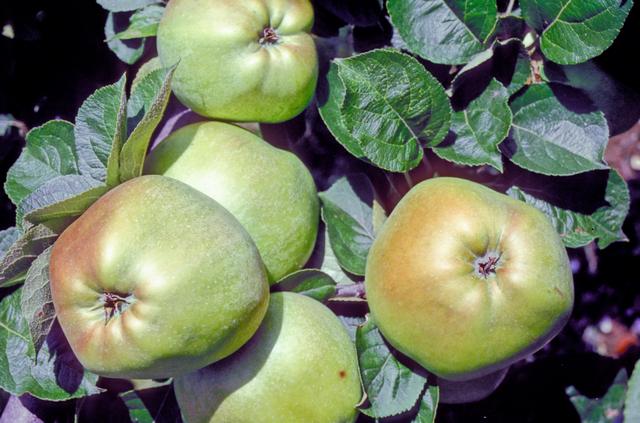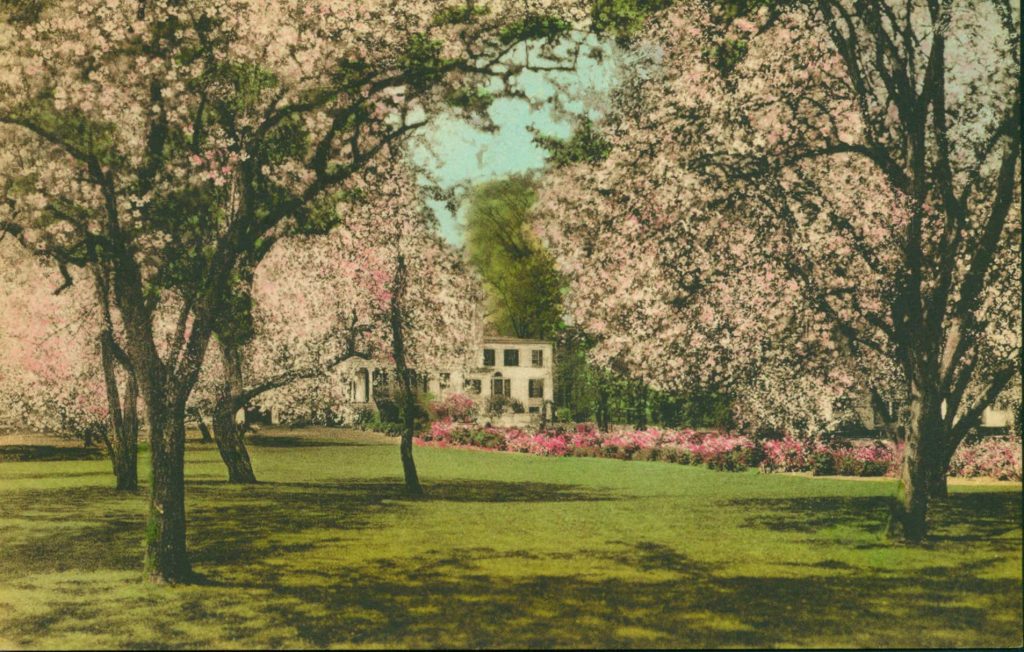‘Laxton’s Orange Pippin’, ‘Worcester Pearmain’, ‘Arthur Turner’, ‘Oxheart’ just a few of the named antique apple varieties that grew in my English garden. A neighbor gave the young trees to me when we arrived in the village; he’d grafted them from his own orchard trees, ones planted by his father when he returned to farming life after World War I, sent to him from an ancient orchard in Somerset, a county in southwest England renowned for its cider-making.

Once you’ve got the bug to grow anything of antique variety, it’s hard to shake. Such plants have a story to tell, and none is more widely read – and lengthy — than that of the humble apple. I don’t want to go into the whole snake-Eve-apple thing; suffice to say it’s been the fruit of royalty (one variety I grew was the ‘Costard’, which was a favorite of Edward I, and on his cook’s shopping list in 1292). Apples were the sustaining food of hunter gatherers and the main ingredient of hard cider and applejack, the main thirst quenchers for pioneers when water was often not potable. Cider is reputedly what brought Johnny “Appleseed” Chapman such success; he wasn’t just goofy guy with a pot on his head, bopping across the prairie scattering apple seeds for fun. He was a canny nurseryman, distributing appleseed for profit; the apples, however, were not dainty nibbles for refined dining, but destined for the cider presses in pioneer homes. Raised by a nursery-owning family, Chapman knew where the seed would be most likely to grow, he sowed the seed with care, arranged for the trees to be tended, and thereby staked a legal claim to some choice land. He may have been more than a little eccentric, but at his death, it was said he owned 1200 acres scattered across some of the most fertile land in the Midwest. How’s them apples?

Arriving in the New World, apples were among the first plants grown by the Pilgrims who brought seed of their most treasured varieties with them – graft wood and saplings would not have survived the Atlantic crossing or bitter winters of the east coast. But a process of selection and cross-fertilizing between the sorts that made the cut led to a whole new strain of American apple varieties. Andrew Jackson Downing (1815-1852), the renowned American horticulturist, landscape architect and social reformer, wrote, “When an American fruit grower wishes to produce a new variety of excellence, he always chooses the seeds of the finest sorts within his reach. [and] a great number of the best American fruits have been originated by planting the seeds of the finest old European varieties.”

Down the road from my garden is one of Colorado Spring’s most stunning landmarks, The Garden of the Gods. In its shadow is an old farm ranch co-opted as a learning center. Along with the usual range of farm animals and workings there is a rather shabby orchard supposedly growing tried-and-true heirloom fruit trees. I believe it’s up for renovation, so it might be a chance to introduce the ‘Colorado Orange’, a recently discovered old-timer, long thought to be extinct. Addie and Jude Schuenemeyer, came across it while surveying the remnants of an old orchard in southwestern Colorado, something they do in support of their Montezuma Orchard Restoration Project (aka MORP). They’d been searching for 20 years or so, and document research and DNA testing revealed that what they suspected could very well be true. It was indeed the “golden apple” they’d been hoping to find. It’s now being grafted and will eventually become available to those of us who want to contribute to pomological conservation efforts, or just love to grow something that has a nifty story to tell.
©Ethne Clarke, 2020.
For more about the National Fruit Collection and Brogdale Farm visit http://www.nationalfruitcollection.org.uk/
To read Andrew Jackson Downing, I recommend Essential Texts, edited by Robert Twombley, published by W.W. Norton, 2012. https://www.wwnorton.co.uk/books/9780393733594-andrew-jackson-downing
The MORP mission statement reads: “Montezuma Orchard Restoration Project (MORP) works to preserve Colorado’s fruit- growing heritage and restore an orchard culture and economy to the southwestern region. MORP envisions southwestern Colorado being renowned for an orchard culture and economy based on the legendary quality and diversity of Montezuma Valley Fruits.” Learn more at https://montezumaorchard.org/
The USDA Pomological Watercolor Collection is housed in the Rare and Special Collections of National Agricultural Library. This extensive archive of botanical illustrations can be viewed online at https://usdawatercolors.nal.usda.gov/pom/home.xhtml.


